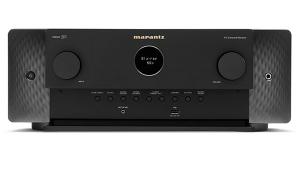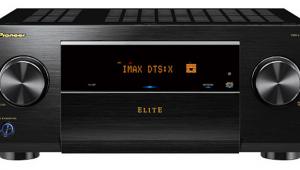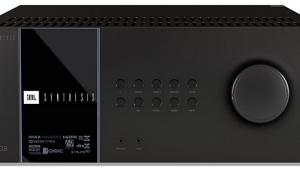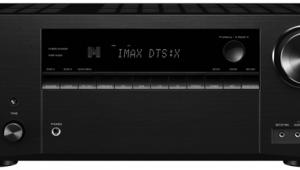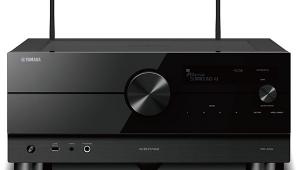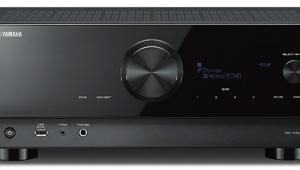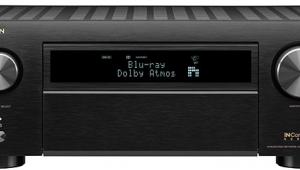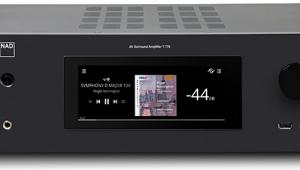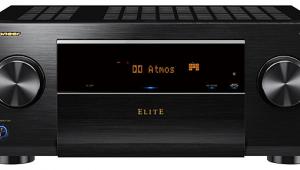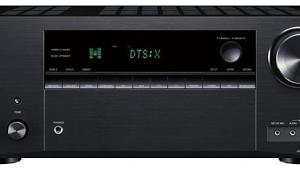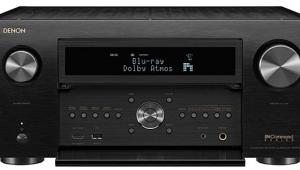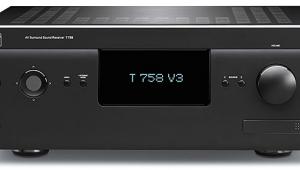Sony STR-DN1060 A/V Receiver Review Page 2
The Sony Sound
Having reviewed four previous generations of this receiver as well as numerous other Sony products, I’ve identified what I now think of as the Sony sound, and the STR-DN1060 hewed to it faithfully, with emphasis on warmth and surprisingly good dynamics for a receiver at this price. The golden tonal signature was apparent even at low volumes, though the receiver retained its confidence at higher ones, playing loud and clean with speakers of reasonable sensitivity. It’s been a while since I’ve paid attention to Sony’s HD-D.C.S. (Digital Cinema Sound) mode, so I often compared it with the no-frills, acronymically obscure A.F.D. (Auto Format Direct) setting. While playing music, I compared A.F.D. (with room correction but no other tricks) with the analog direct or PCM direct setting.
 Lone Survivor, with Mark Wahlberg in a real-life story about Navy SEALs fighting the Taliban, made the case for the Sony as an action-movie receiver. But then, music-savvy receivers usually excel with movies, too. Not only was there a master volume setting that reconciled low-voiced dialogue with aggressive effects, but there was a generous range of such settings, making it easy to pick one suitable for the time of day and settle into the movie. In the contest between HD-D.C.S. and A.F.D., what I came to think of as the cinema magic setting won for its heightening of full-soundfield effects, turning forest shootouts and the blat-blat-blat of helicopters into palpable sensations. It also thickened bass almost to excess and added a delay-related blur to voices, but the net effect was worth it. It was the difference between “this is an accurate rendering of the movie soundtrack—I’m OK with it” and “this is cool—I’m loving it.”
Lone Survivor, with Mark Wahlberg in a real-life story about Navy SEALs fighting the Taliban, made the case for the Sony as an action-movie receiver. But then, music-savvy receivers usually excel with movies, too. Not only was there a master volume setting that reconciled low-voiced dialogue with aggressive effects, but there was a generous range of such settings, making it easy to pick one suitable for the time of day and settle into the movie. In the contest between HD-D.C.S. and A.F.D., what I came to think of as the cinema magic setting won for its heightening of full-soundfield effects, turning forest shootouts and the blat-blat-blat of helicopters into palpable sensations. It also thickened bass almost to excess and added a delay-related blur to voices, but the net effect was worth it. It was the difference between “this is an accurate rendering of the movie soundtrack—I’m OK with it” and “this is cool—I’m loving it.”
Non-Stop has Liam Neeson as an Air Marshal fighting a diabolical foe in the not-so-friendly skies. This time, I had more issues with HD-D.C.S.’s bass treatment. It was full and plump, and too much so with male voices, which localized in the sub. But in a dramatic moment when the airliner descended from front to back, what the cinema mode did with the surround effect was priceless. I felt as if the plane had just flown into my chest cavity.
The last time I heard A Hard Day’s Night was during my first play-through of the vinyl box set of The Beatles in Mono. But for this demo, I chose the 5.1-channel soundtrack of the movie from a Blu-ray rental. In any mode, the Sony delivered the much-loved voices with full tone color and didn’t neglect the zing of the guitars. But HD-D.C.S. paid unexpected musical dividends by pushing up the voices, overlaying a euphonic vinyl-like coloration to everything, and made the room seem larger. At first, all this seemed rather artificial—or “falsified,” as my notes remind me—but I came to prefer it. The unvarnished soundtrack seemed bluntly oversimplified by comparison. Albeit clean. Very clean.
Chances and Snares
Well-recorded voices and period instruments recorded in a hard-walled space offer both opportunities and tripwires to an ambitious audio system. Do the voices sound human or mechanical? Do the viols sing or grate? Is the interaction with stone walls oppressive or liberating? I found out with the Renaissance composer John Ward’s Fantasies & Verse Anthems, performed by the string consort Phantasm with the Choir of Magdalen College, Oxford, recorded in the college’s chapel. The SACD’s surround track is billed as 5.1, though the center channel is silent. With Sony’s warmish amp, the viols didn’t squeak; they gleamed attractively. Better still, though, were the voices. When the full chorus entered on “Praise the Lord, O my soul,” all I could tell my notebook was “wow.” The high-resolution medium and the euphonic amp gave the complex weave of chorus and individual soloists a glimmering beauty like the play of sunlight on a restless ocean. The chapel’s subtle decay bonded tightly with voices and instruments, enriching them without drifting away from them.
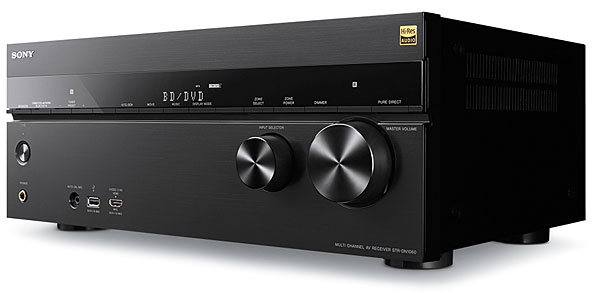
Steely Dan’s Greatest Hits, on vinyl, showed just how sophisticated Sony’s DCAC has become. With most room correction systems, there’s a tradeoff between clarity and listening comfort. Improvements in imaging generally come with unwanted side effects: often a thinner tonal balance and additional listening fatigue. DCAC focused Donald Fagen’s vocal image so dramatically that I had to remind myself I was listening to stereo with no center channel. Switching back and forth between room-corrected A.F.D. and the uncorrected analog direct mode, I could hear the lead vocal materializing and dematerializing—like magic! And yet, DCAC’s do-no-harm strategy left the ingratiating tonal balance of the amp and analog playback system virtually untouched. Of course, in addition to greater focus, the room-corrected version added bass management, solidifying the peerless grooves of the Dan’s formidable session drummers.
I spent my final evening (of several pleasant ones) with the receiver using its Wi-Fi-enabled AirPlay on an iPad. Yielding to the temptation to think less like a critic and more like a casual listener, I played several albums that I’d ripped from vinyl to MP3 at 192 kilobits per second, back in the days before I got serious about lossless encoding. Deodato’s Prelude features the famous jazzification of Richard Strauss’ Also sprach Zarathustra. To my surprise, the receiver’s voicing glossed over the crude upper mids that I’d expected the lossy encoding to impose on the brass and orchestral parts. I moved on to the Focus compilation Ship of Memories, which opens with four tracks from an ill-fated 1973 album that was never completed, in part because engineers were having trouble with the insubstantial sound of a new drum kit. No, the Sony didn’t repair this audible flaw, but it did keep the cymbals in check just enough to let the percussion elements cohere, while allowing the rich textures of Jan Akkerman’s moody guitar parts to shine through.
In a receiver market increasingly split between Atmos nine-channel 5.1.4 and Atmos seven-channel 5.1.2, the Sony STR-DN1060 wisely dodges the issue, simply providing top-notch basic surround sound and well-integrated triple-wireless features. For many users—especially those would like to wait a few years, at least, for new products and content to animate the new surround technologies—that’s plenty. This great-sounding receiver brilliantly leverages well-established audio standards and is built for pure pleasure.
